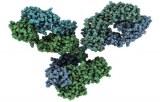Antibodies are broadly categorized by their source, specificity, and intended use. Primary antibodies bind directly to target antigens and can be produced in vivo through immunization in animals or humans, or in vitro via cell culture and recombinant technologies. These include monoclonal antibodies, which are homogeneous and specific for a single epitope, and polyclonal antibodies, a mixture recognizing multiple epitopes. Secondary antibodies bind primary antibodies to amplify detection and are often conjugated to enzymes or fluorophores. Additionally, isotype controls are non-specific antibodies that help monitor background binding in experiments.
Immunoglobulin Isotypes and Functions
The antibody family is divided into five main isotypes: IgG, IgA, IgM, IgD, and IgE, each exhibiting distinct structural features and immune functions. IgG is the most abundant in circulation and central to long-term immunity, while IgA predominates in mucosal surfaces defending against pathogens at entry points. IgM acts as a first responder during infections, IgE mediates allergies and parasite defense, and IgD functions mainly as a B-cell receptor.
Specialized and Engineered Antibody Formats
Advances in biotechnology have given rise to synthetic and engineered antibodies, including humanized, chimeric, bispecific antibodies, nanobodies, and antibody fragments. These formats enhance therapeutic and diagnostic capabilities by improving specificity, reducing immunogenicity, or enabling novel functions. Their versatility broadens the scope of antibody-based applications in medicine and research.
Applications of Antibodies
Antibodies serve as essential tools in biomedical research, diagnostics, and therapy. They are utilized in immunohistochemistry, flow cytometry, ELISA, Western blotting, and as targeted biologics in treating cancers, autoimmune diseases, and infectious conditions. The diverse categories and formats of antibodies facilitate tailored selection suited to varied experimental designs and clinical goals.




